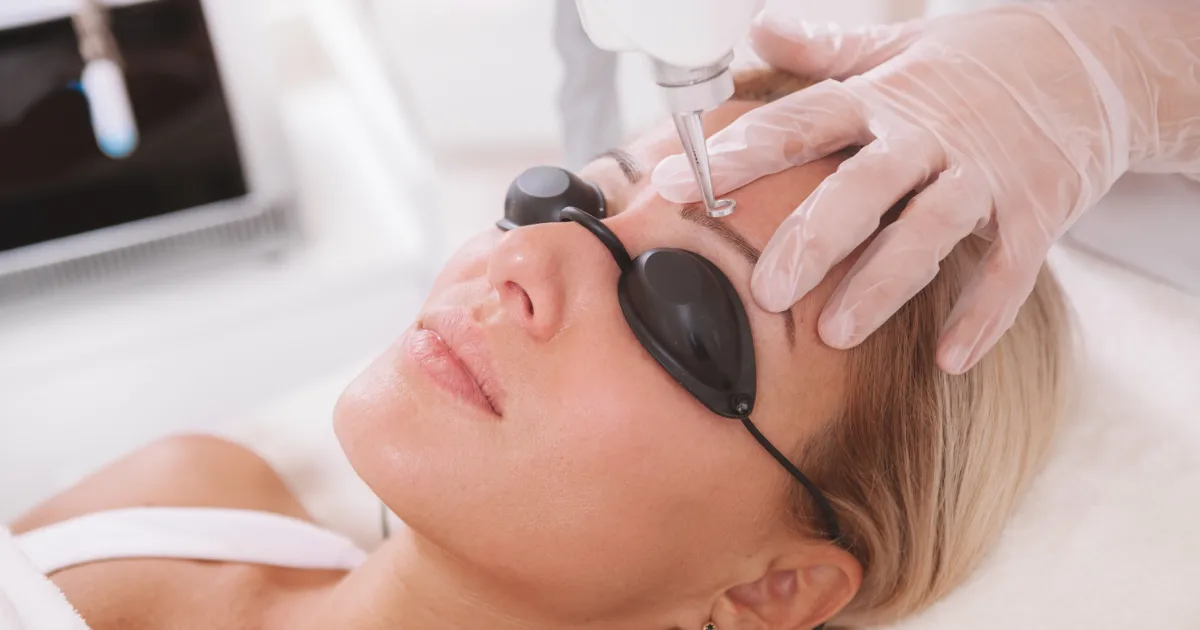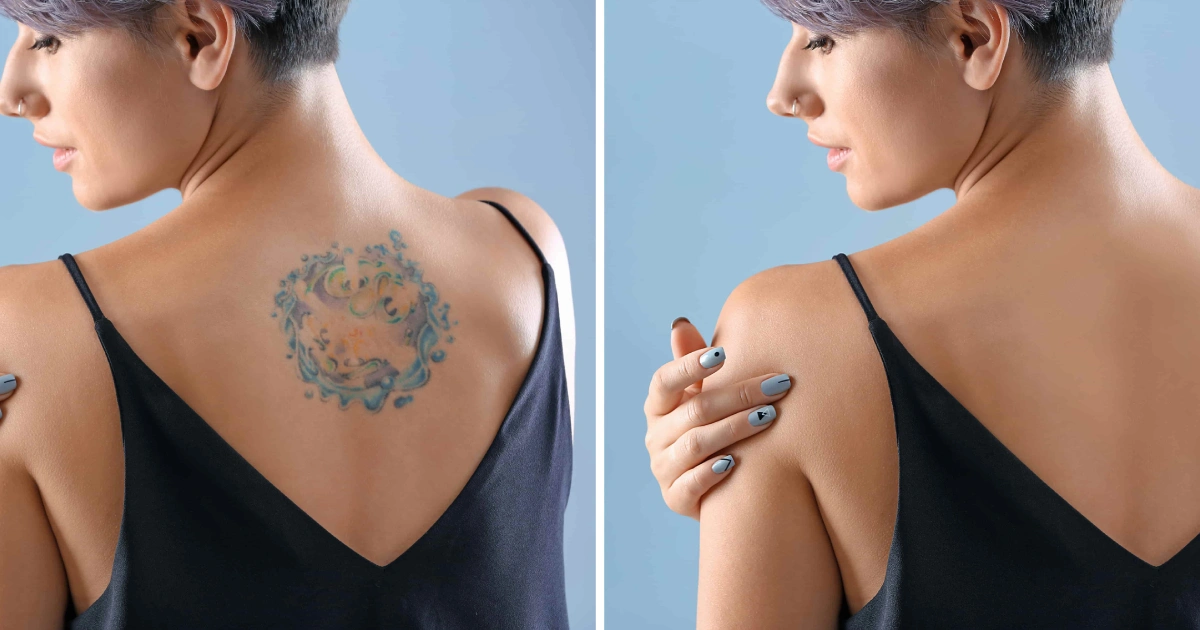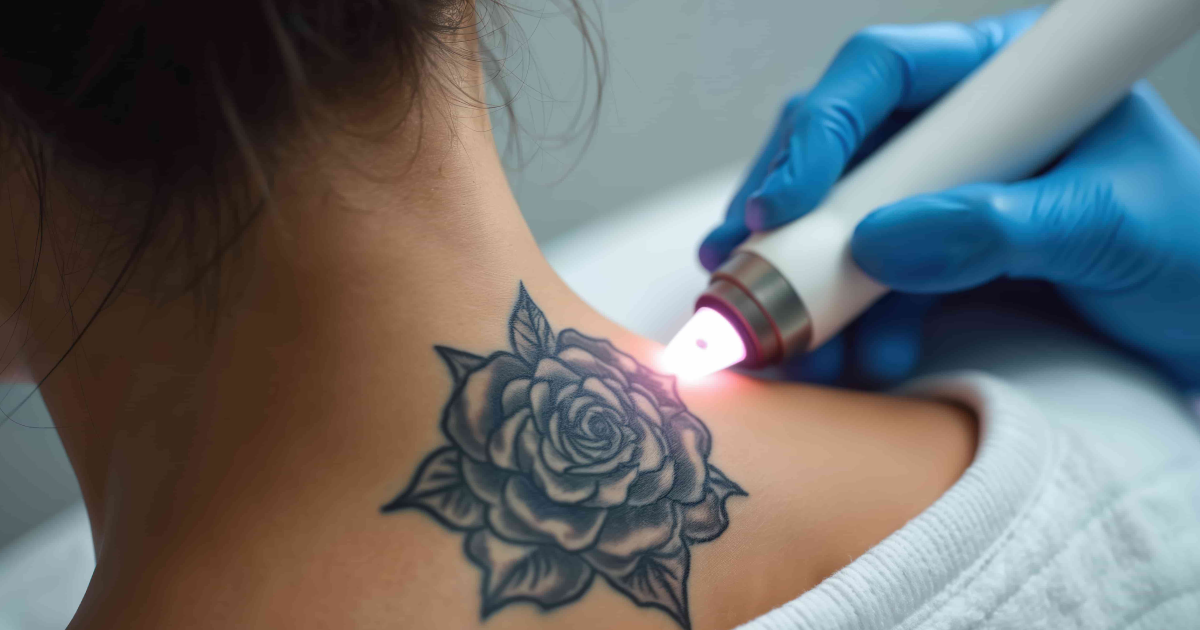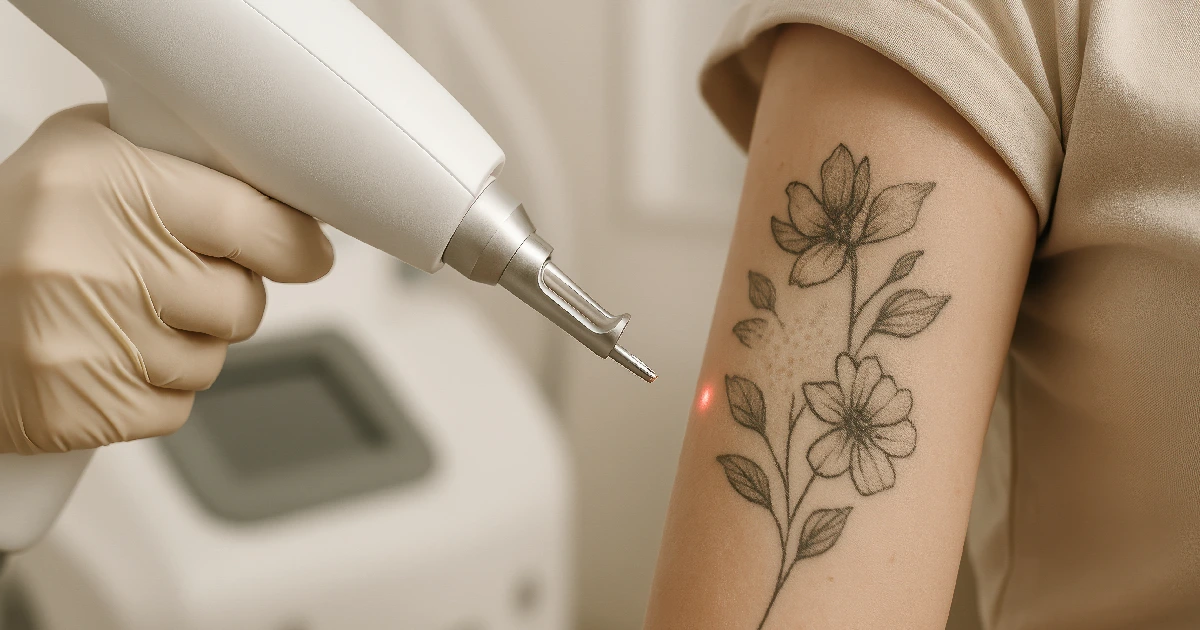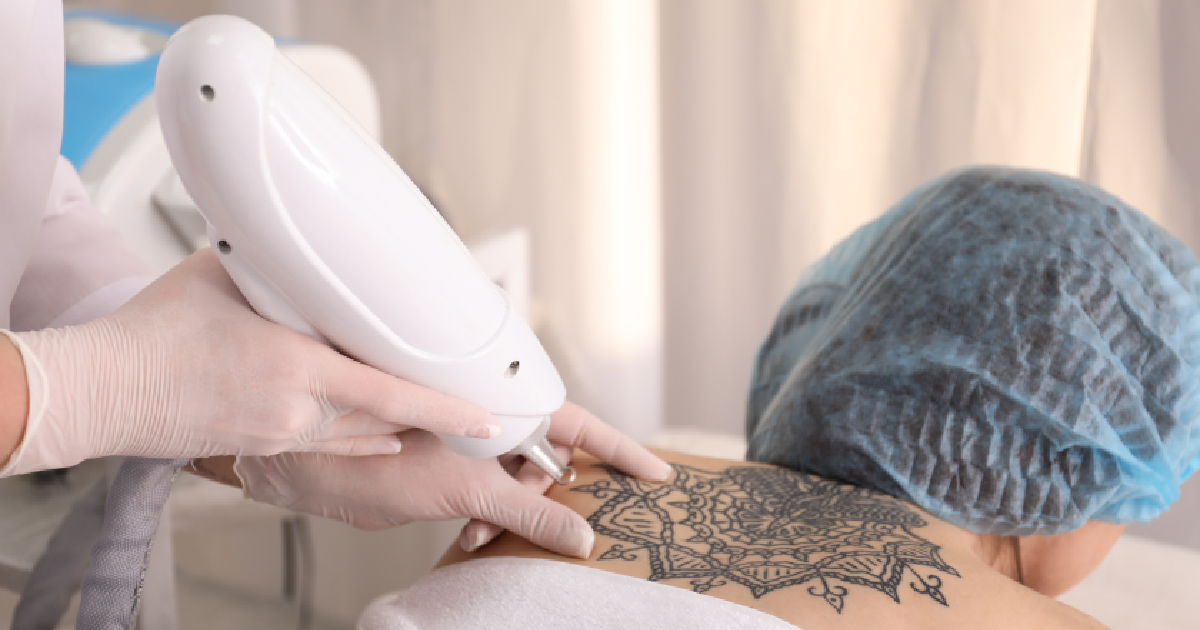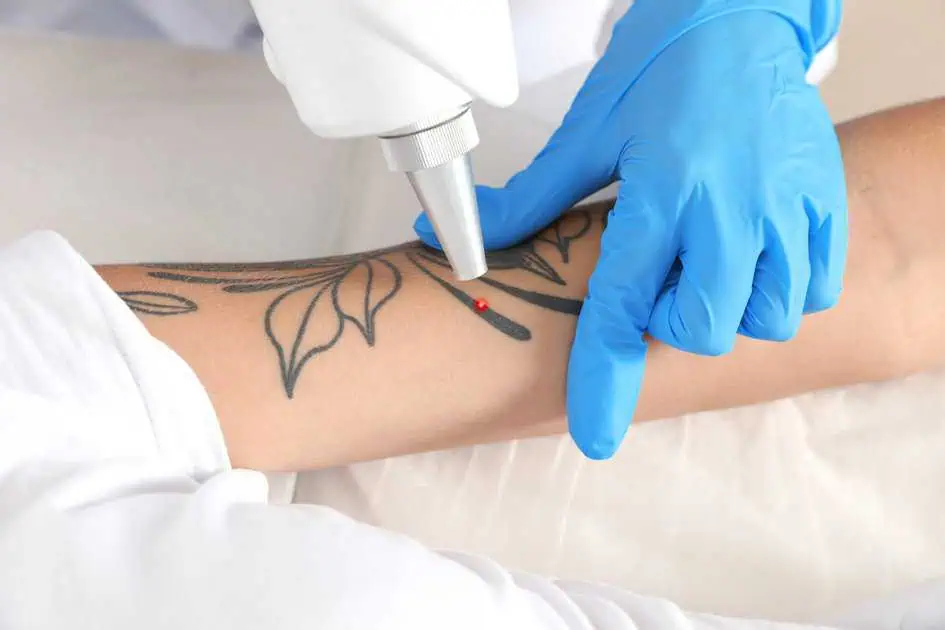Table of Contents
Tattoo removal is one of the most popular procedures among people who regret their tattoos or want to change them. While the process can greatly enhance your skin’s look, proper tattoo removal aftercare is essential for the best results. If you’ve already begun your tattoo removal or are considering it, knowing how to care for your skin afterward will help your tattoo fade effectively and keep your skin healthy.
We’ll explore the top five essential aftercare tips that will help you through the tattoo removal healing process. Proper care minimizes potential side effects and improves your chances of a smooth, successful removal.
1. Protect Your Skin from Sun Exposure
Sun exposure can affect the healing process after professional tattoo removal. Whether it’s your first session or you’re undergoing multiple treatments, ensure the area being treated is protected from direct sunlight. This not only protects the skin but also improves your overall results.
Why Sun Protection is Key:
- UV rays may cause irritation, swelling, or changes in pigmentation. As a result, you will experience scarring and uneven skin tone after your tattoo is removed.
- Sunless tanning is also not allowed during this period.
What to do:
- Apply a mineral-based sunscreen with an SPF of 50 or higher to the treated area whenever you step outside. Zinc oxide-based sunscreens are ideal for healing skin.
- Wear clothing or a waterproof bandage when you go outside for extra protection.
- Do not use tanning beds during healing to avoid further damage to your skin.
Follow this tip to minimize your skin’s risks and allow it to heal smoothly.
2. Keep the Area Clean and Dry
Proper hygiene prevents infections and thus promotes the healing process. After each session, your skin might be tender or swollen, so it’s important to keep the treated area clean without irritating it.
How to Clean the Area:
- Wash the treated area with warm water and a gentle, fragrance-free soap.
- Do not scrub the skin, as this can cause irritation and interfere with healing.
- Dry the area by gently patting with a clean towel. Never rub the skin.
When to Clean:
- Clean the area twice daily (morning and night) during the tattoo removal healing process, or more often if necessary, to prevent excess moisture or dirt buildup.
Keeping the treated skin clean and dry helps prevent infections and speeds up healing.
3. Avoid Picking or Scratching
You might notice itching, redness, or blisters around the treated area as your skin heals. These are common side effects, but they are usually temporary. The worst thing you can do at this stage is pick at the skin, which slows down the healing process.
What to Avoid:
- Don’t scratch or peel any scabs or blisters. This could lead to scarring or hyperpigmentation.
- Picking at the skin can also cause infection, which can prolong the healing process.
What to do:
- If you experience itching, apply a soothing product like hydrocortisone 1% or tattoo removal healing cream to reduce the irritation.
- Apply soothing gels for tattoo removal to keep the skin moisturized and prevent scabbing.
Resist the urge to pick; your skin will thank you for it!
4. Moisturize with Healing Cream or Ointment
Proper hydration is a must for your skin to heal efficiently. Dry skin can crack, which might lead to scarring, so keeping the skin moisturized throughout the tattoo removal aftercare process is essential. At Renewal Tattoo Removal
Which Products to Use:
- Apply a thick layer of healing creams or ointments to help create a barrier that promotes healing.
- Avoid products with fragrances or alcohol because they may irritate your skin and impede your recovery.
When to Apply:
- Apply your tattoo removal healing cream after cleaning the area to keep your skin hydrated and protected. Make sure to reapply cream at least 2-3 times per day.
Keeping your skin moisturized helps prevent excessive scabbing and keeps it soft and nourished.
5. Monitor the Healing Process and Watch for Complications
While the majority of the healing process should go smoothly, it’s important to stay vigilant and monitor for any signs of complications. Most people experience mild redness or swelling after tattoo removal, but if these symptoms persist or worsen, you should contact your provider.
Signs to Watch For:
- Infection: An unusually red or swollen area may indicate an infection.
- Blistering: Small blisters will heal on their own. However, large blisters or pus-filled blisters may indicate an infection.
- Discoloration: Your skin might lighten or darken after treatment. This is normal, but if the discoloration doesn’t resolve, contact your tattoo removal in Raleigh, NC.
To minimize the risk of infection or complications, keep the treated area clean and follow the aftercare instructions precisely.
Take the First Step Towards Tattoo-Free Skin
Don’t forget to follow these easy but useful tattoo removal aftercare tips. They will help you have a smooth and best tattoo removal experience. With proper care, you’ll be on your way to clearer skin in no time.
If you’re considering tattoo removal in Raleigh, NC, or would like to know more about the best tattoo removal methods available, schedule your consultation today with Renewal Tattoo Removal. Our team is here to guide you through every step of the process to ensure you get the results you’re looking for.
Schedule Your Tattoo Removal Consultation
Your Tattoo Removal Success Starts with Aftercare
Tattoo removal is an investment in your skin’s future, and it is important to give it the care it needs during healing. Following these tattoo removal aftercare instructions will help you get the best results. Remember to keep your skin protected, moisturized, and clean, and watch for complications.
Contact us today to start your tattoo removal journey. At Renewal Tattoo Removal, we offer safe, effective, and professional tattoo removal.
Contact us to schedule your consultation. With proper care and professional support, you’ll soon enjoy clear, beautiful skin without that old tattoo holding you back.

